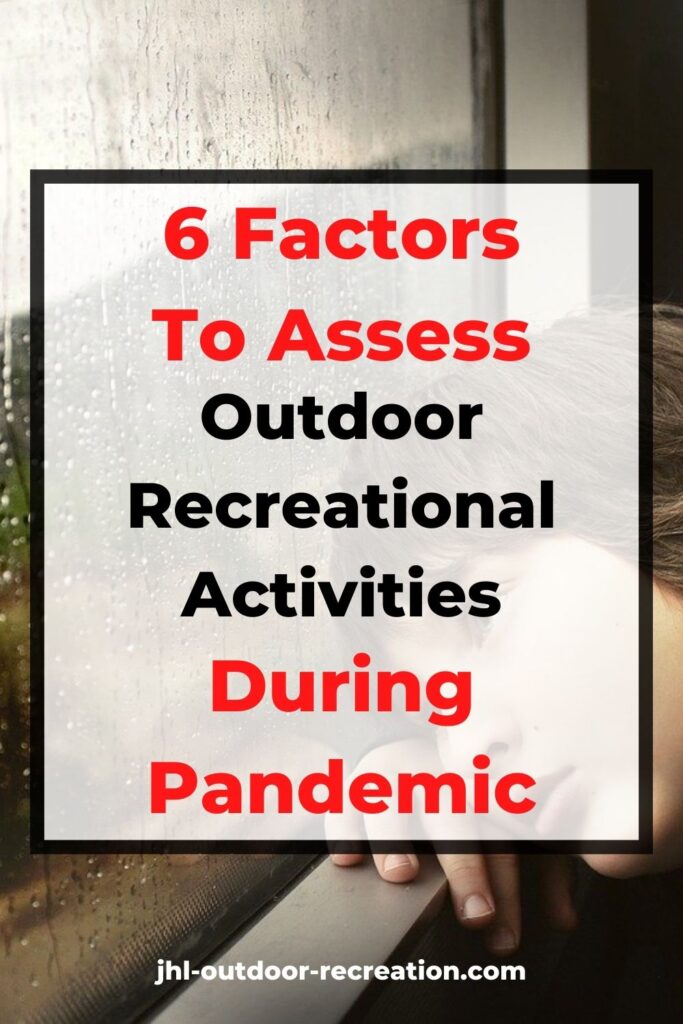Back in the day when we were kids, we usually asked our parents’ permission to go out to play with our friends. Now, fast forward to what we are facing. The COVID-19 has totally changed our world. We are unsure whether it is safe for outdoor recreational activities during this pandemic or not.
Given that COVID-19 has been with us for more than 1 year, the daily infection and death cases cause us stress and anxiety. We are unsure when this pandemic is going to end. – Or, it won’t?
To me, the answer is not merely a “Yes” or “No”, but the reason or rationale behind our answer matters. So, let’s explore the key factor in assessing to what extend it is safe for outdoor recreational activities during the pandemic.
1. Understand the transmission of COVID-19
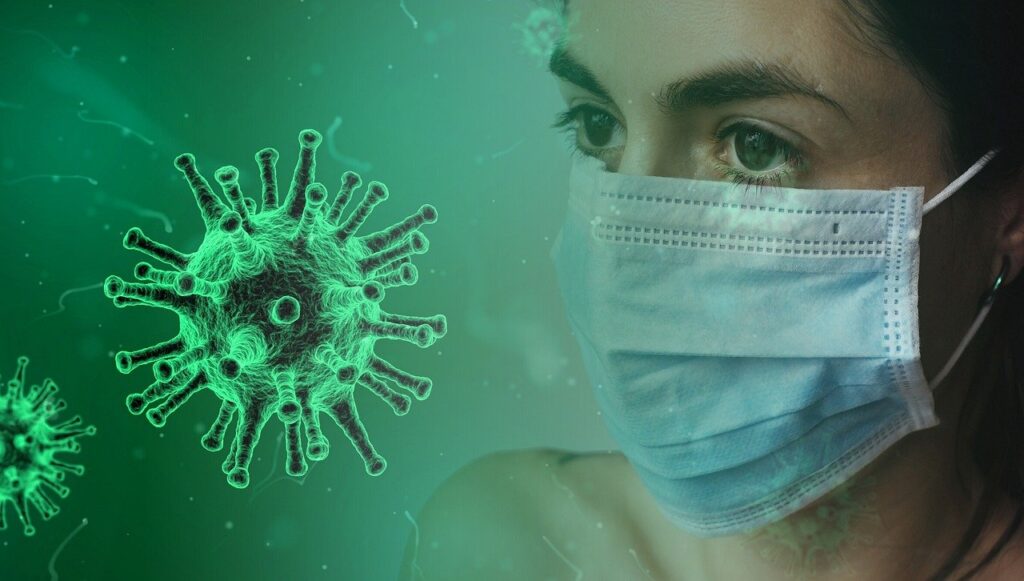
Before we identify whether it is safe for outdoor recreational activities during this pandemic or not, we need to understand how COVID-19 transmission works.
We need social contacts. But, COVID-19 has caused outbreak and eventually become a global pandemic. Then, we experience global lockdown. – An uncomfortable yet effective method to contain the pandemic before vaccines are available.
We start to believe the effectiveness and we follow the stay home order. But, the risk of getting infection outdoors is lower than indoors.
So, why does it differ from what we experience during global lockdown?
To understand the COVID-19 transmission, let’s have a look on the criteria, types of transmission and the body reaction on COVID-19.
Criteria of transmission
According to World Health Organization (“WHO”), COVID-19 transmission is due to close or direct contact between people.
It can be transmitted via sneezing, coughing, speaking, singing or breathing heavily from the infected person to the next person via mucous surface, such as mouth, nose and eyes. Touching surface and objects can also be an agent for transmission.
And, there is higher chance of getting COVID-19 when the ventilation is poor in a confined space.
Thus, WHO has defined 3Cs in view of how COVID-19 is spread
- Crowded place
- Close-contact
- Confined and enclosed spaces with poor ventilation
Thus, you wouldn’t be surprised that although it is claimed to be safer in outdoors, COVID-19 continues to spread. We go out for gatherings, social visits in occasions where the air ventilation is poor.
In fact, 3Cs is the ESSENTIAL factor that we need to assess the suitability of outdoor recreational activities.
Types of transmission
The type of COVID-19 transmission also includes droplet or aerosol / airborne.
Droplet transmission
They are big droplet particles especially when we are coughing and sneezing. They are heavier than aerosol / airborne particles so they will drop to the ground eventually.
The droplet particles drop to the ground within 2 metres, around 6 feet, from the infected person. So, if the distance is more than 2 metres, it is “safe” from COVID-19 infection. – That is why Centers for Disease Control and Prevention (“CDC”) recommends 6-feet social distancing.
Aerosol / Airborne transmission
Aerosol / airborne particles are much tinier and lighter than droplet particles. These particles will LINGER in the air for a greater period of time.
Because of this, the particles can travel much farther than 2 metres. – Furthermore, aerosol / airborne particles can even travel up to 8 metres!
You’ll see aerosol / airborne transmission is more transmissible than droplet transmission. – If you want to go out for recreational activities, you may need to consider a social distancing greater than 2 metres, or even more than 8 metres.
Body Reaction of COVID
The reaction of COVID-19 can be classified as symptomatic, pre-symptomatic, and asymptomatic. Regardless of which reactions, they are all TRANSMISSIBLE.
Symptomatic
Patients develop symptoms as a result of COVID-19 infection. There are a lot of symptoms related to COVID-19. You can refer to WHO for the detailed list of the symptoms.
However, the most common symptoms are:
- Fever
- Dry cough
- Fatigue
- Shortness of breath (for severe cases)
Pre-symptomatic
Patients have NOT YET developed symptoms of COVID-19 due to the incubation period. According to WHO, the incubation period is on average 5 to 6 days, but can be up to 14 days.
That is why most of the countries adopt self-quarantine or self-isolation of 14 days to identify the COVID-19 carrier, if infected.
Asymptomatic
Patients will NOT develop symptoms of COVID-19 even until they are recovered. Surprisingly, there are around 20% people will be COVID-19 asymptomatic.
Does the result trigger your concern? This means the asymptomatic patients may be unaware of their infection and transmit the virus without their awareness. They can be any person, even the people around you.
2. World Health Organization and local guideline
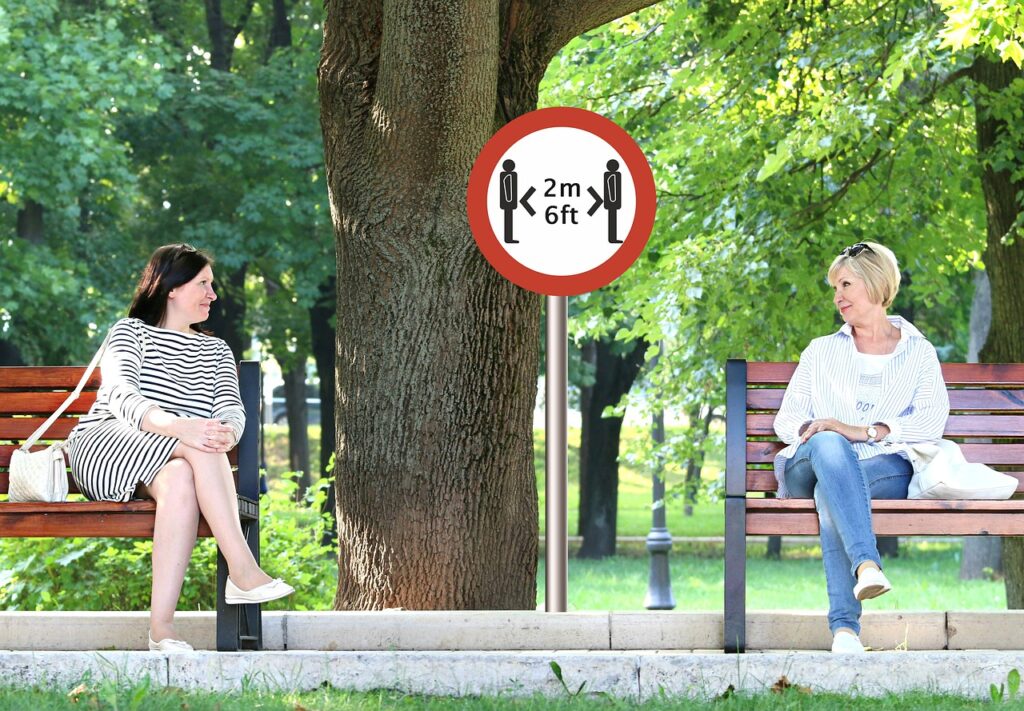
During this pandemic, whether you wanna carry out outdoor recreational activities or not, you MUST follow the guidelines set by WHO or your local authority.
WHO has set guidelines to reduce the risk of getting COVID-19. However, the most common guidance includes:
- Social distancing of 1 metre
- Wearing mask
- Washing / sanitise your hand frequently
The local guideline should be consistent with the guideline of WHO. In cases where there is difference, you should follow the local authority guidelines. – In fact, it is in line with the recommendation of WHO as well.
For example, WHO recommends social distancing of 1 metre. CDC, a US health agency, advices social distancing of 6 feet, instead of 1 metre. In this case, people in the US need to observe social distancing of 6 feet.
However, I would consider applying the “whichever is more stringent” mindset in following the rules due to:
- It won’t break the local laws and regulation
- Lower risk of getting infection
But, remember to follow the guidelines with NO exception even you feel it is OK to go out. For example, if the guideline prohibits jogging or hiking, you shouldn’t go jogging or hiking even though you feel they are “safe”.
And, always CHECK the latest status of the guideline because they are meant to be revised and updated based on the latest status of COVID-19 in the respective countries.
3. Nature of outdoor recreational activities
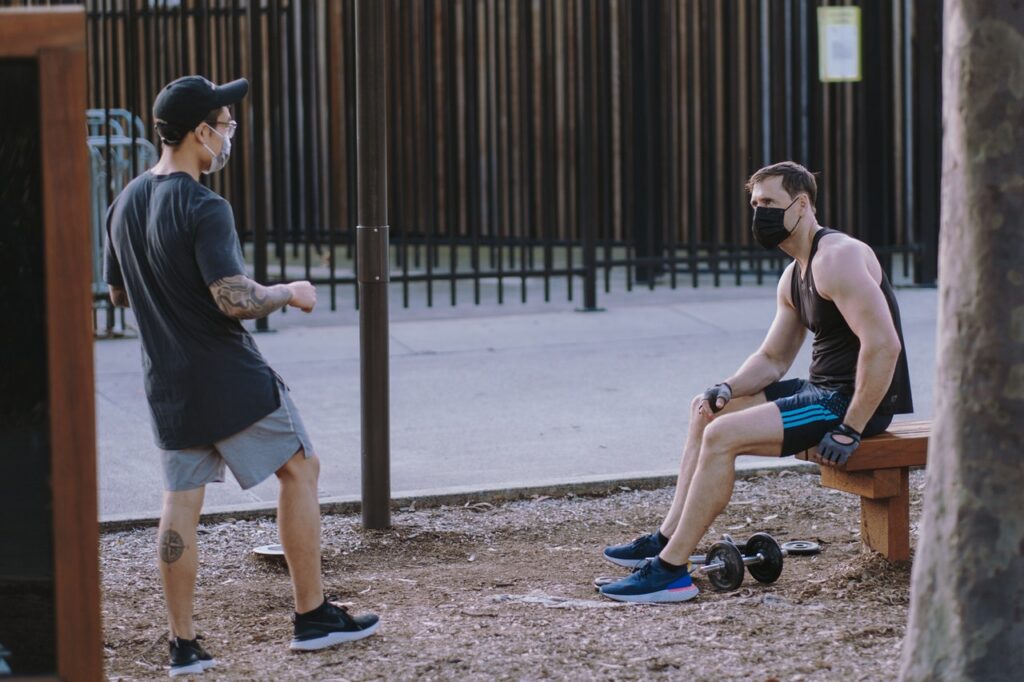
So, are you deciding to go out for picnic, jogging, basketball, football, hiking, or whatnot? Well, your decision depends on the nature of the outdoor recreational activities during this pandemic as well.
Let’s look at the relevant factor to identify the nature of the activities:
Intensity
Is it a rigorous exercise? Like running or hiking, you may not want to wear a mask because these are high-intensity workout. – In fact, WHO doesn’t recommend wearing mask when having high-intensity workout, too.
But, if you are not convinced about this, you may need to consider indoor activities.
Or, if you are concerned to wear mask, you can choose low-intensity outdoor recreational activities, such as fishing, walking along the park, or picnic, etc.
Number of players
Can the activities be done with minimal people, say 2 people or SOLO? This is a test of the 3Cs by WHO, where more people involved increase the chance of close and direct contact, which subsequently increase the risk of getting COVID-19.
So, solo running / jogging is safer than group activities, such as football or group hiking.
And, if you want to have a group activity, is it possible to have the members WITHIN the same household?
Occasion
This is to test the “Crowded place” under WHO’s 3Cs.
Can you foresee the DENSITY of the people in that place? For example, if you go for hiking, you may foresee you encounter a lot of hikers on a popular trail or fewer hikers on a less popular trail.
And, consider the density of people on “weekdays vs weekends” or in “morning vs evening”. If possible, you can choose the less popular session to avoid the crowd.
4. Latest status of whereabouts
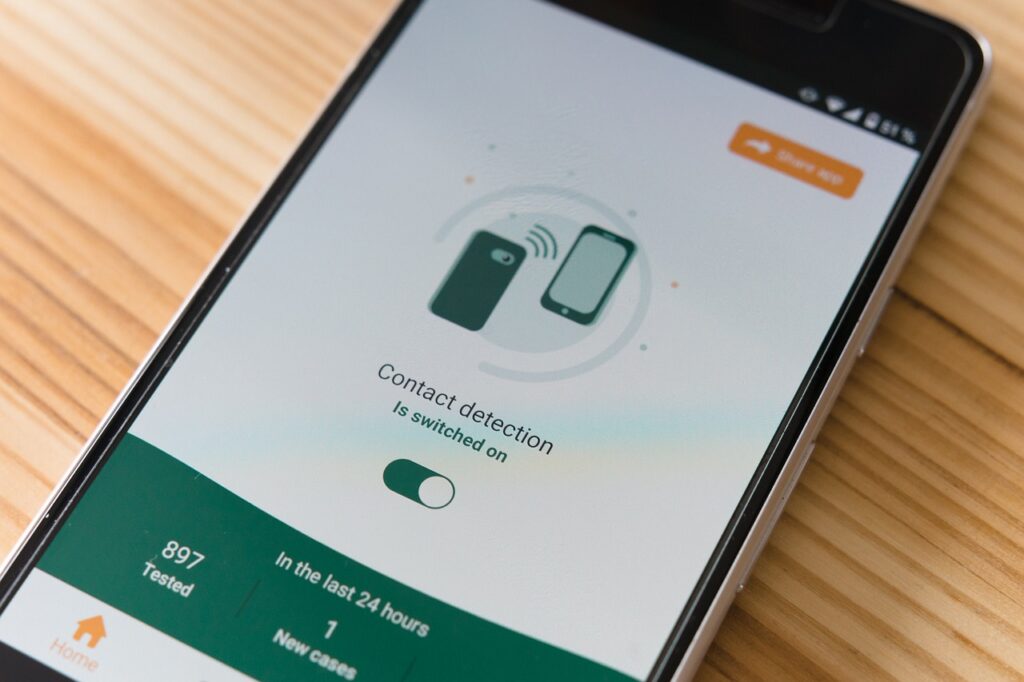
Many countries have put in effort to track the COVID-19 cases to break the chain of COVID-19 infection. They either develop mobile apps or update the cases in their official website.
For example, South Korea and China had developed their own mobile app to track the whereabouts of their citizens and residents wherever they visit.
Although it is controversial of using mobile app on the privacy issue, we cannot deny the effectiveness in tracking COVID-19 through mobile app.
So, when you have decided where you want to go, even for a city park, remember to check the latest COVID-19 status to assess whether that area is high-risk or low-risk.
We can check the following to determine this risk:
- Infection cases number
- Active cases number
- Death cases number
- When is the recent infected case
5. Self-assessment

During this pandemic, you can consider the following for outdoor recreational activities:
Partner
If the activity can be done solo, would you be willing to do it solo? Or, would you need to have a partner with you?
If you need a partner / group members, is it possible to have the members within the same household?
What if you need members from different household, to what extend you are confident that they are not COVID-19 carrier? – Talk about the possibility of meeting asymptomatic person.
Purpose
With that being said, ask yourself what is the main reason of the outdoor activities?
Do you want to work out to be healthy or you want that for the sake of going out? – You have to be HONEST with yourself.
We are in the midst of combating this global pandemic. Whenever we go out, we actually increase the risk of getting COVID-19.
Maybe somebody says is ok to go out. But imagine if most of the people think the same thing, outdoor will be flooded with people with both serious and non-serious in working out. – Guess what, this meets “Crowded place” of 3Cs.
We want to go out with valid reason. Therefore, it is not recommended for people to go out merely to hang around and create unnecessary risk.
Health condition
You should ONLY go out for outdoor activities provided that you are healthy and free from the symptoms of COVID-19.
Whenever you are sick or suspect that you are infected with COVID-19 even without symptom, DON’T go out for outdoor activities. Also, you should go for testing if you are in suspicion.
There is no exception even when you are in suspicion and you foresee you are alone, and the place is remote or distant. But, you cannot deny that you might still encounter other people directly or within your area. – Don’t you forget that COVID-19 is also aerosol / airborne transmissible?
Comfort level
Let’s say all the above shows that it is safe for outdoor recreational activities, you don’t have to FORCE yourself to go out if you are not comfortable with it.
Perhaps you take into your family members into consideration and prefer stay home for indoor workout for their health and safety concern.
This is really great as long as you apply the “whichever is more stringent” mindset, because you have greater risk awareness.
But, your comfort level shouldn’t work the other way round, meaning you FEEL is ok, even WHO or your local guideline don’t recommend such measures.
For example, you believe that it is ok to have minimal direct body contact for group activities, which in fact, is not ok at all.
Remember, don’t set a less stringent rule on your own. – Not only you risk by not complying with your local guidelines, you are imposing greater risk in getting COVID-19 for people and yourself!
6. Recovered patients / vaccinated people

Ok, recovered patients and vaccinated people should be safe from COVID-19 because they have anti-bodies in their body and they should be immune to COVID-19. So, they don’t have to observe the above and follow WHO and local guidelines, right?
But the truth is, NOPE! – You still need to observe the above.
In fact, there are some reported cases of reinfection of COVID-19. An article shows that there are 31 confirmed reinfected COVID-19 cases so far. Furthermore, an early study by Public Health England shows that out of 6,614 participants, 44 had “possible” or “probable” reinfections.
You also realize that they are several types of vaccines for COVID-19 and their efficacy varies as well. This shows a person still has the chance of infection even after vaccination.
There is no guarantee that the vaccines can stop people from getting COVID-19 infection completely.
Final thought
We have this perfect scenario. Everything will get back to normal and we go out without any concern after we are vaccinated. – Who doesn’t like outdoor group activities?
However, given the great uncertainty of COVID-19 right now, i.e. the possibility of viral mutation and the possibility of achieving herd immunity, there is no certain answer when our battle with COVID-19 will end.
By now, while the activities are slowly recovering, we need to take additional pre-caution especially we want to go out for outdoor activities.
Thus, the answer for outdoor recreational activities during this pandemic is not merely “Yes” or “No”, but the reasons and considerations that matter. Comply with WHO or local guidelines and make sure the activities don’t meet the 3Cs.
Think like fastening our seat belt while driving. We don’t need seat belt most of the time. But when accident happens, our seat belt saves our lives.
Relevant posts
